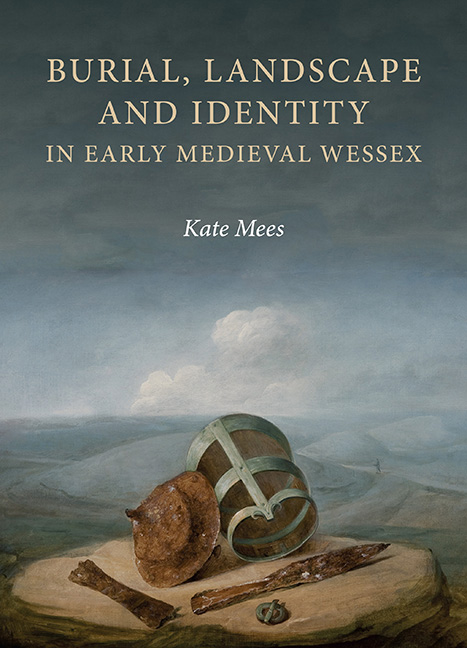Book contents
- Frontmatter
- Dedication
- Contents
- List of Illustrations
- Acknowledgements
- List of Abbreviations
- Note on Period Terminology and Other Definitions
- Introduction: Perspectives, Approaches and Context
- 1 Monument Reuse and the Inherited Landscape
- 2 Topography and Ritual Life
- 3 ‘Britons and Saxons’?
- 4 Land Use, Territoriality and Social Change
- 5 The Church and the Funerary Landscape
- Conclusions
- Appendix: Gazetteer of burial sites in the study area, c. AD 450–850
- Bibliography
- Index
- Anglo-Saxon Studies
1 - Monument Reuse and the Inherited Landscape
Published online by Cambridge University Press: 24 October 2019
- Frontmatter
- Dedication
- Contents
- List of Illustrations
- Acknowledgements
- List of Abbreviations
- Note on Period Terminology and Other Definitions
- Introduction: Perspectives, Approaches and Context
- 1 Monument Reuse and the Inherited Landscape
- 2 Topography and Ritual Life
- 3 ‘Britons and Saxons’?
- 4 Land Use, Territoriality and Social Change
- 5 The Church and the Funerary Landscape
- Conclusions
- Appendix: Gazetteer of burial sites in the study area, c. AD 450–850
- Bibliography
- Index
- Anglo-Saxon Studies
Summary
Early medieval communities in Wessex inhabited a landscape that bore conspicuous traces of the ways in which their prehistoric and Roman predecessors had ordered and managed the environment. Ancient trackways followed the natural contours of the terrain and linear Roman roads cut across the grain of the landscape. The region was littered with the masonry of Roman villas and civic buildings that had been abandoned and left to decay. Upstanding funerary mounds, ceremonial stone alignments and banks and ditches in low relief punctuated the upland. The survival and visibility of these vestiges of past societies was of course locally variable, determined to a large extent by the underlying geology and by the intensity and nature of land exploitation regimes. On the great expanses of calcareous grassland that prevailed across the central belt of the region, an abundance of prehistoric earthworks had been preserved by virtue of the endurance of pastoral land use. Yet, even in areas of the chalk downland where arable farming was practised, certain monuments seem to have been actively avoided and protected from damage by Iron Age and Romano-British cultivators. Was such a desire to conserve and curate ancient sites shared by early medieval populations?
In this chapter I seek to understand how relict features became incorporated into the praxis of landscape use during the four centuries following the fall of the Roman Empire. I explore the significance of different categories of ancient monument in the mortuary practices of early medieval Wessex and interrogate any identifiable sub-regional patterns in monument reuse. I shall start, however, by exploring the ways in which the natural environment affected the locations of early medieval burial and settlement sites, and how such distributions may have become distorted by the history of archaeological investigation and by human activity in the intervening period. A critical understanding of the processes that influenced both the early medieval landscape itself, and our own twenty-first-century view of that landscape, is key to determining the validity of any trends we identify.
The physical environment and the archaeological record
As outlined in the Introduction, the Wessex region encompasses a diversity of landscape character areas, or pays, that bear witness to the constant process of negotiation between societies and land.
- Type
- Chapter
- Information
- Burial, Landscape and Identity in Early Medieval Wessex , pp. 17 - 54Publisher: Boydell & BrewerPrint publication year: 2019

